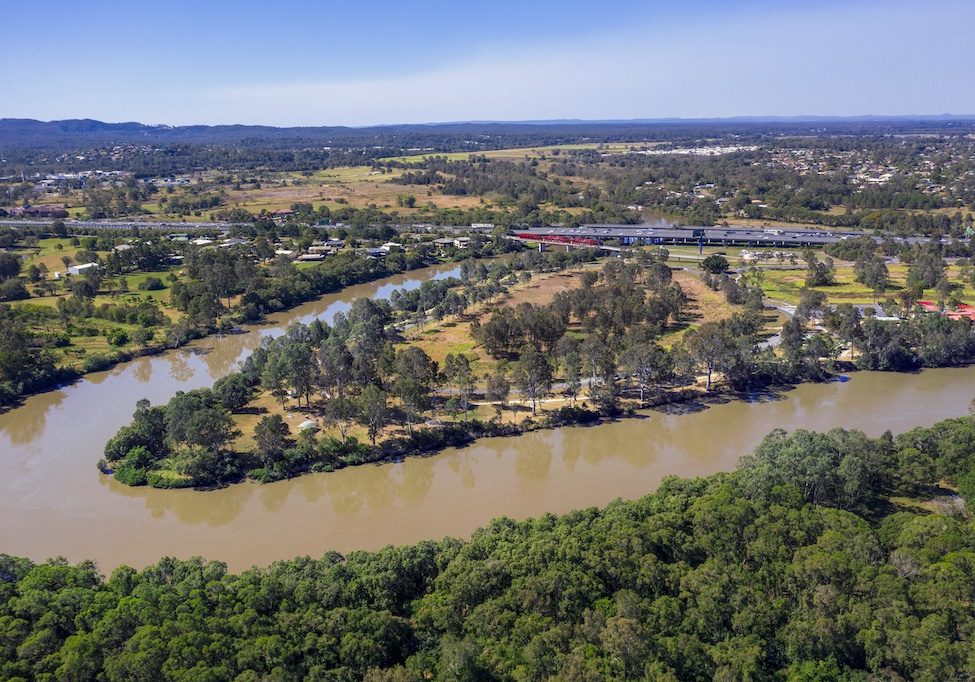Many local governments, including many in Central Queensland, do not currently impose conditions in their development approvals in relation to environmental offsets. Part of the reason for this is that environmental offsets are not widely understood by local governments, despite the fact that Councils can impose conditions for environmental offsets due to their Biodiversity overlay mapping showing Matters of Local Environmental Significance (MLES). This article sets out to provide a broad overview of the offset regime under the Environmental Offsets Act 2014 (EO Act)
There are five elements that provide the basis for environmental offsets in Queensland, outlining state interests in biodiversity as part of the State Planning Policy (Queensland Government, 2017):
- Development is located in areas to avoid significant impacts on matters of national environmental significance and considers the requirements of the Environment Protection and Biodiversity Conservation Act 1999
- Matters of state environmental significance are identified and development is located in areas that avoid adverse impacts; where adverse impacts cannot be reasonably avoided, they are minimised.
- Matters of local environmental significance are identified and development is located in areas that avoid adverse impacts; where adverse impacts cannot be reasonably avoided, they are minimised.
- Ecological processes and connectivity is maintained or enhanced by avoiding fragmentation of matters of environmental significance.
- Viable koala populations in South East Queensland are protected by conserving and enhancing koala habitat extent and condition.
These five elements are in addition to the provisions of each Councils’ planning scheme.
Matters of National Environmental Significance (MNES) and Matters of State Environmental Significance (MSES) are included in planning scheme mapping in the Biodiversity overlay. If a proposed development is impacting on MNES, MESE or MLES and the development has tried to avoid the matter of environmental significance or mitigate the impacts on the matter of environmental significance, and there will still be an impact on the matter of environmental significance, then an offset would be appropriate. In this way offsets may be used to counterbalance significant residual impacts from particular activities on particular matters of environmental significance. There is a hierarchy for developments that they must avoid an impact, if that is not possible they must mitigate the impact and where impacts can’t be avoided or mitigated they are to be offset. In cases where an offset cannot occur, the activity may not be approved.
Requirements for Environmental Offsets
There is a Queensland Environmental Offsets Policy (Queensland Government, 2020) which outlines the requirements for environmental offsets, including for impacts to marine parks, national parks and conservation reserves. This policy is a statutory instrument given effect through section 12 of the EO Act and prescribed under the Environmental Offsets Regulation 2014.
The Queensland Environmental Offsets Policy must be considered where the offset proposal (through a notice of election) is submitted before the approval is granted. Alternatively, the Policy can be applied following the granting of an approval containing a condition for an offset under the EO Act.
Staged offsets
For staged offsets, the full extent of potential impacts on environmental matters of significance from the entire project need to be taken into consideration as part of the significant residual impact assessment. For offsets to be provided in stages the approval needs to include a condition that enables the project and subsequent offsets to be staged.
Amending existing approvals
When there is a proposal to amend an approval the significant residual impact assessment relates to the cumulative impacts of the entire project (as amended).
State offsets
The triggers for State based offsets include:
- In relation to critically endangered, endangered, vulnerable or near threatened plants under the Nature Conservation Act 1992;
- For a protected area under the Nature Conservation Act 1992;
- For a marine park under the Marine Parks Act 2004; and
- For koala conservation in South East Queensland under State Code 25 (Development in South East Queensland koala habitat areas) Queensland Government, 2020.
Offset areas to be preserved
Principles of offsetting
Only 3% of all offsets are undertaken using a terrestrial or aquatic offset areas (Queensland Government, 2019).
There are seven principles in relation to offsetting (Queensland Government, 2020). These are:
- Offsets will not replace or undermine existing environmental standards or regulatory requirements or be used to allow development in areas otherwise prohibited through legislation or policy;
- Impacts must first be avoided, then mitigated, before considering the use of offsets for any remaining impact;
- Offsets must achieve a conservation outcome that counterbalances the significant residual impact for which the offset is required;
- Offsets must provide environmental values as similar as possible to those being lost;
- Offset provision must minimise the time-lag between the impact and the delivery of the offset;
- Offsets must provide additional protection to environmental values at risk, or additional management actions to improve environmental values; and
- Where legal security is required, offsets must be legally secured for the duration of the impact on the matter of significance.
Legal security
The land on which an offset will be delivered is required to be legally secured (Queensland Government, 2020). An area of land is legally secured offset if the area is:
- For an environmental offset protection area under section 30 of the EO Act;
- An area declared as an area of high nature conservation under section 19F of the Vegetation Management Act 1999;
- Declared as a nature refuge under section 46 of the Nature Conservation Act 1992;
- Declared as a protected area under section 29)(1) of the Nature Conservation Act 1992;
- Declared as a special wildlife reserve under section 43D of the Nature Conservation Act 1992;
- Secured as a statutory covenant for environmental purposes under the Land Act 1994 or the Land Title Act 1994;
- Declared as a fish habitat area under the Fisheries Act 1994; or
- Declared as highly protected area of Marine Park under the Marine Parks Act 2004.
When offset obligation ceases
The requirement for a legally secured offset ceases when the administering agency is satisfied the actions and obligations under an offset delivery plan have been completed in full or the offset has been secured for at least the duration as the impact on the matter of environmental significance arising from the development.
Financial offset
Approximately 97% of offsets are financial offsets (Queensland Government, 2019). The main reason for this is that it is difficult for developers to find land that has the right characteristics (within the same broad vegetation group as the impacted regional ecosystem, of the same regional ecosystem and within the same bioregion).
Financial offsets allow developers to acquit there responsibility for an offset area by paying the offset amount calculated by the Department of Environment and Science.
All financial offsets required by the State or local government must adhere to the offset principles. The Financial Settlement Offset Calculator is used to determine the amount of the financial offset.
Once the developer pays the offset amount then the developer’s obligations have been met and a conservation outcome for the impacted matter will be delivered by the Department of Environment and Science or the relevant local government.
Specific to local governments
The local government is able to use its financial offsets to achieve a conservation outcome for the nature, size and scale of the impact on matters of environmental significance.
A local government may use their own land or use money derived from sources other than financial settlements to ensure a conservation outcome is achieved (Queensland Government, 2020).
Opportunities for landowners
The environmental offsets legislation and Policy allows for a Mitigation Banking Scheme, which is a system that allows landowners to accumulate biodiversity credits by undertaking actions on their land that enhance or protect environmental values. These credits can then be sold to a person or company with an obligation to offset their environmental impacts (Queensland Government, 2019). The Queensland Government (2019) is looking at funding options to encourage landowners to participate in the Mitigation Banking Scheme.
To date this option has not been effectively taken up by landowners, but may provide another source of income for all or part of their property.
Commonwealth offsets in Queensland
Commonwealth offsets can be imposed in relation to the following items:
- The Environment Protection and Biodiversity Conservation Act 1999 to the extent the development has been deemed to be a ‘controlled action’; and
- The Great Barrier Reef Marine Park Act 1975.
Where the Commonwealth imposes offset conditions on a development after the State or local government have already imposed an offset condition, the proponent can apply to the lower level of government to have the duplicate offset condition removed provided the offset is for substantially the same impact and environmental matter of significance.
Conclusion
The framework for environmental offsets in Queensland provides a useful and advantageous model to deal with environmental impact, notwithstanding that they can be complicated in practice. However, if the seven principles of offsets are followed as the guiding source of offsets, the challenge of conditioning offsets becomes less onerous. Local governments in Queensland could fund essential conservation outcomes by conditioning environmental offsets through conditions of development approvals. There is significant opportunity for local governments to start conditioning environmental offsets for the benefit of the environment and the community.
If you would like to explore further how environmental offsets may affect you, please reach out and discuss this with our specialist Planning and Environment Lawyers, Tarnya Fitzgibbon, at [email protected] or Sarah Day, at [email protected] or phone 3439 8880.
References
Environmental Offsets Policy 2014
Environmental Offsets Regulation 2014
Queensland Government (2017) State Planning Policy
Queensland Government (2019) A Review of Queensland’s Environmental Offsets Framework: A discussion paper.
Queensland Government (2020) Queensland Environmental Offsets Policy (version 1.9)
Contact Us
Need more information or want to book in a time to talk with one of our experts? Just fill in the form below and we'll get back to you.
Further Resources

NDAs and Contamination
Latest Videos
Businesses that we have helped
Here's a small selection of businesses we've helped achieve great outcomes.









As Featured In:


















